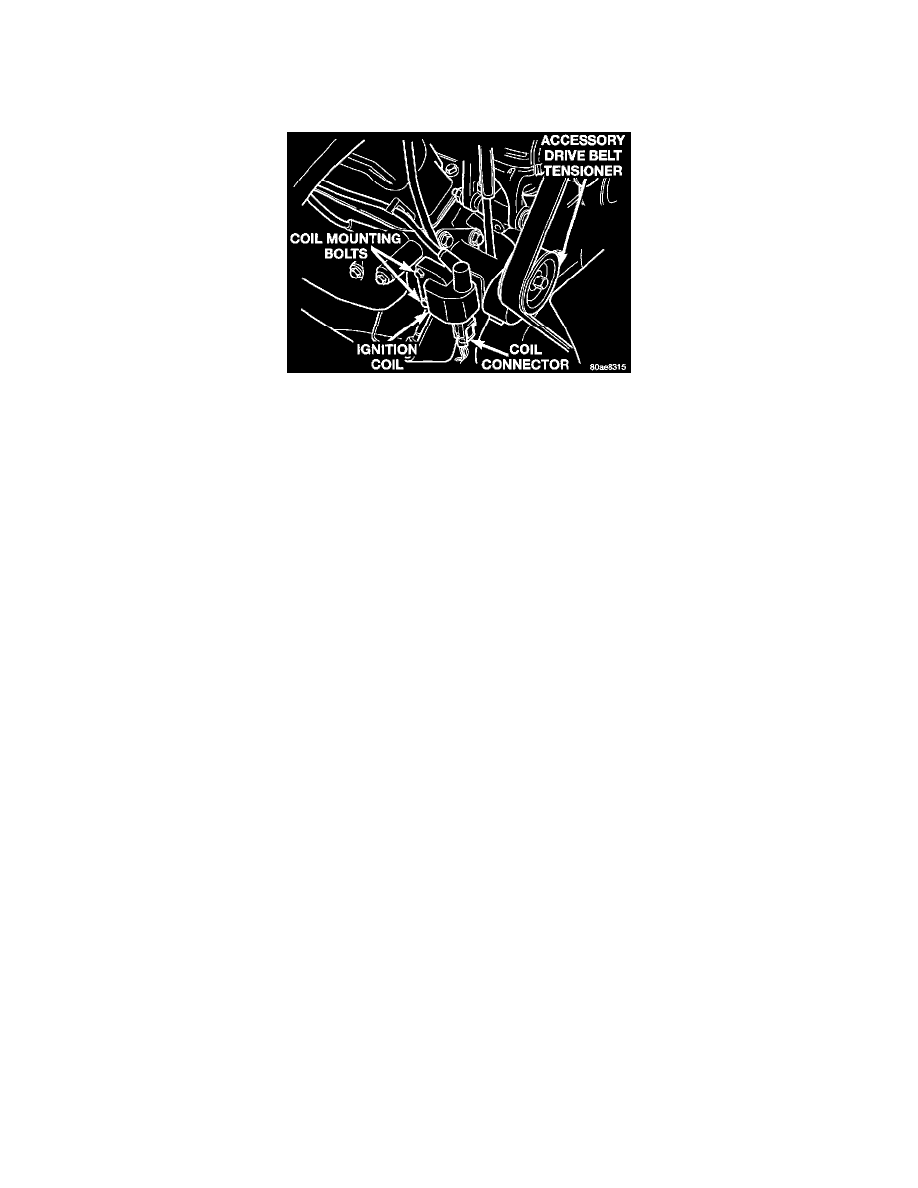RAM 2500 Truck 4WD V8-5.9L VIN Z LDC (1998)

Ignition Coil: Testing and Inspection
Ignition Coil Test
To perform a complete test of the ignition coil and its circuitry, refer to the DRB scan tool. Also refer to the appropriate Powertrain Diagnostics
Procedures. To test the coil only, refer to the following:
Ignition Coil (5.2L Shown)
The ignition coil is designed to operate without an external ballast resistor.
Inspect the ignition coil for arcing. Test the coil according to coil tester manufacturer's instructions. Test the coil primary and secondary resistance.
Replace any coil that does not meet specifications. Refer to the IGNITION COIL RESISTANCE chart.
Ignition Coil Resistance
Coil Manufacturer = Diamond
Primary Resistance 21-27° C (70-80° F) = 0.97 - 1.18 Ohms
Secondary Resistance 21-27° C (70-80° F) = 11,300 - 15,300 Ohms
Coil Manufacturer = Toyodenso
Primary Resistance 21-27° C (70-80° F) = 0.95 - 1.20 Ohms
Secondary Resistance 21-27° C (70-80° F) = 11,300 - 13,300 Ohms
If the ignition coil is being replaced, the secondary spark plug cable must also be checked. Replace cable if it has been burned or damaged.
Arcing at the tower will carbonize the cable boot, which if it is connected to a new ignition coil, will cause the coil to fail.
If the secondary coil cable shows any signs of damage, it should be replaced with a new cable and new terminal. Carbon tracking on the old cable can
cause arcing and the failure of a new ignition coil.
